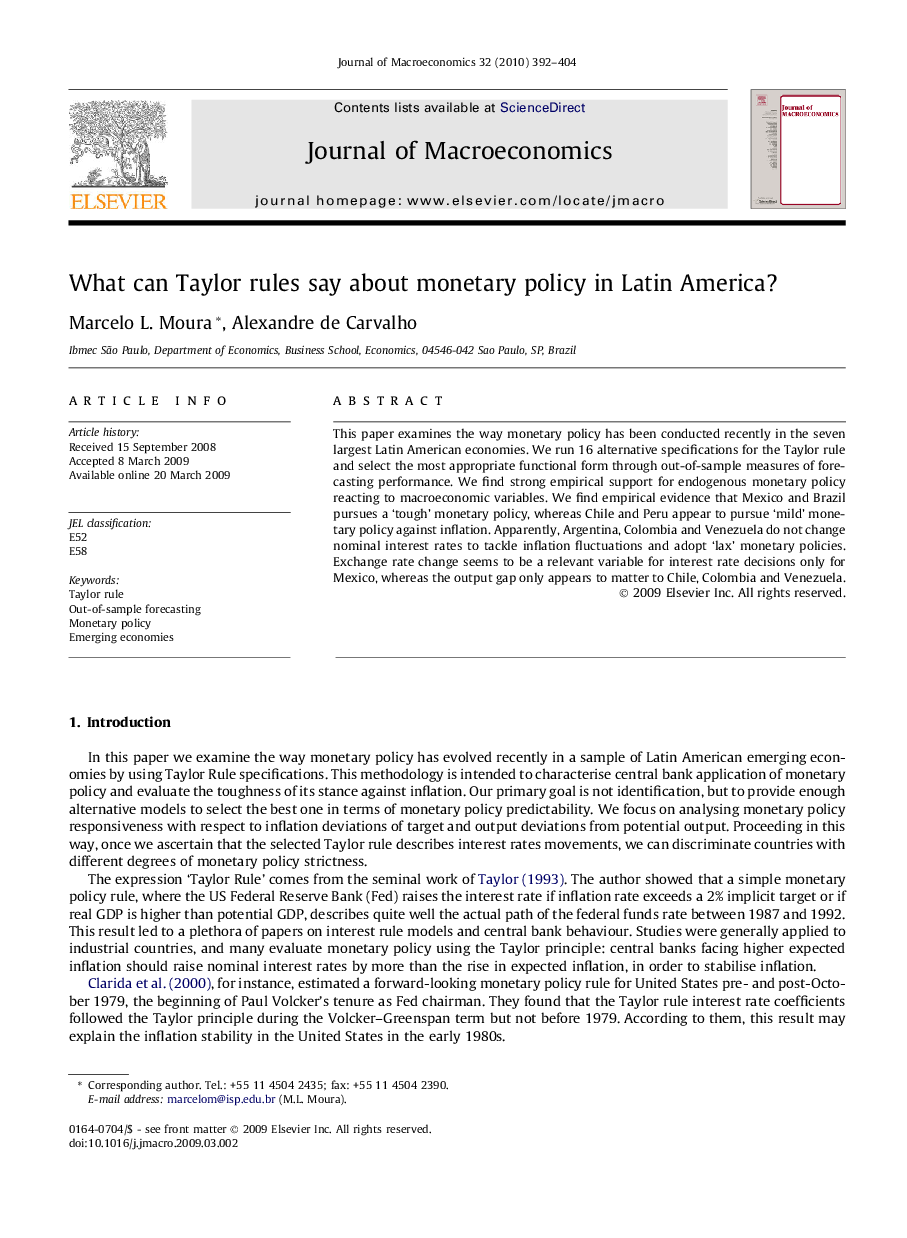| Article ID | Journal | Published Year | Pages | File Type |
|---|---|---|---|---|
| 966036 | Journal of Macroeconomics | 2010 | 13 Pages |
Abstract
This paper examines the way monetary policy has been conducted recently in the seven largest Latin American economies. We run 16 alternative specifications for the Taylor rule and select the most appropriate functional form through out-of-sample measures of forecasting performance. We find strong empirical support for endogenous monetary policy reacting to macroeconomic variables. We find empirical evidence that Mexico and Brazil pursues a 'tough' monetary policy, whereas Chile and Peru appear to pursue 'mild' monetary policy against inflation. Apparently, Argentina, Colombia and Venezuela do not change nominal interest rates to tackle inflation fluctuations and adopt 'lax' monetary policies. Exchange rate change seems to be a relevant variable for interest rate decisions only for Mexico, whereas the output gap only appears to matter to Chile, Colombia and Venezuela.
Related Topics
Social Sciences and Humanities
Economics, Econometrics and Finance
Economics and Econometrics
Authors
Marcelo L. Moura, Alexandre de Carvalho,
